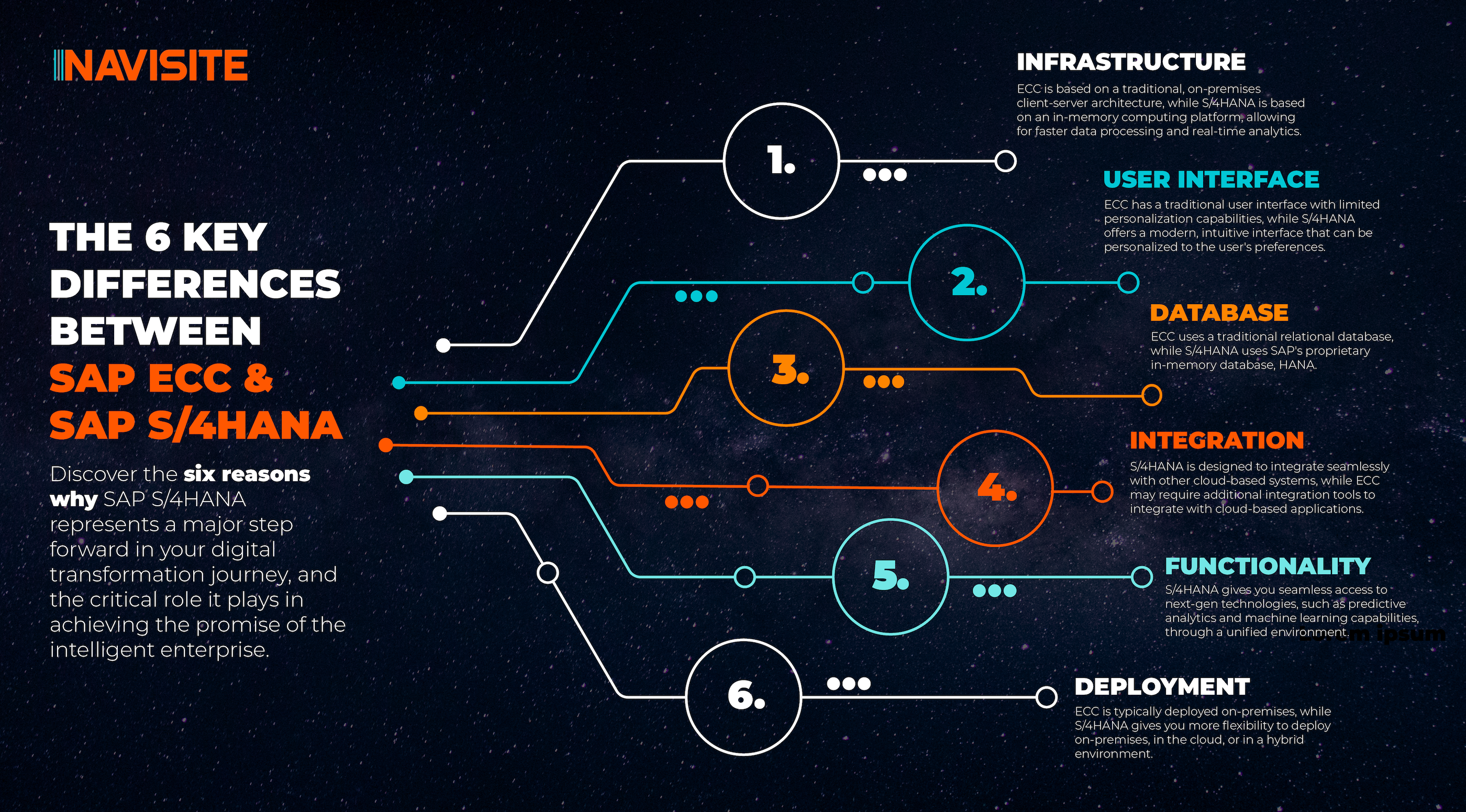Imagine a world where your enterprise operations are seamless, efficient, and adaptable to every business demand. That’s the promise of moving your SAP systems to the cloud.
If you’ve ever felt the frustration of rigid IT infrastructures holding back your company’s potential, you’re not alone. Many enterprises are facing similar challenges, and the solution is clear: fast-track the shift to SAP on the cloud. Why is this shift happening so quickly, and why are more businesses like yours making the leap?
The answer lies in the transformative benefits that cloud technology offers—flexibility, scalability, and cost-efficiency. Picture your business processes running smoother, your IT costs reducing, and your innovation capacity expanding. It’s not just a dream; it’s the reality for companies that have embraced this change. Curious about how this transition can redefine your enterprise’s future? Keep reading to uncover the compelling reasons behind this movement and how you can leverage SAP on the cloud to propel your business to new heights.

Credit: news.sap.com
Benefits Of Cloud Migration For Sap
Enterprises are fast-tracking their shift to SAP on the cloud. Why? The benefits of cloud migration for SAP are compelling. It transforms business operations, offering agility and efficiency. Let’s dive into the key advantages.
Cost Efficiency
Cloud migration reduces infrastructure costs. No need for expensive on-site hardware. Pay only for what you use. This model saves money. It offers predictable budgeting.
Scalability And Flexibility
Scaling on the cloud is simple. Increase or decrease resources as needed. Meet changing demands without hassle. Flexibility is a core feature. Businesses adapt swiftly to market shifts.
Enhanced Performance
Cloud platforms boost SAP performance. Faster data processing. Improved reliability. Reduced downtime. Enterprises enjoy seamless operations. Enhanced performance drives growth.

Credit: www.navisite.com
Driving Factors Behind Rapid Adoption
Enterprises are rapidly shifting to SAP on the cloud. Several driving factors fuel this quick adoption. These factors include technological advancements, competitive pressure, and rising customer demand. Understanding these elements helps explain the shift.
Technological Advancements
Cloud technology has made significant progress. It offers faster processing and better security. SAP on the cloud benefits from these improvements. Enterprises leverage these technologies for efficient operations. They achieve better data management and enhanced scalability. This shift also offers cost savings. Businesses reduce the need for physical servers and maintenance.
Competitive Pressure
Market competition is intense. Companies must adapt to stay ahead. Moving to SAP on the cloud offers a competitive edge. It provides access to real-time data and insights. This enables quicker decision-making. Enterprises that lag behind risk losing market share. The pressure to innovate pushes businesses to adopt cloud solutions.
Customer Demand
Customers expect fast and reliable service. They demand personalized experiences. SAP on the cloud meets these expectations. It allows businesses to respond quickly to customer needs. Enhanced data analytics provides deeper insights. Companies can tailor offerings to individual preferences. Meeting customer demand becomes easier and more efficient.
Challenges In Transitioning To Sap On Cloud
Enterprises face hurdles in moving to SAP on the cloud. These include data migration complexities, integration issues, and security concerns. Despite challenges, many accelerate this transition for improved scalability and cost efficiency.
Transitioning to SAP on Cloud is a strategic move for many enterprises, offering scalability, flexibility, and cost efficiency. However, this shift isn’t without its hurdles. Enterprises often face significant challenges that need careful planning and execution. Understanding these challenges can help you make more informed decisions and mitigate potential risks.Data Security Concerns
One of the most pressing issues is data security. Moving to the cloud means your data is stored off-premises, which can be unsettling. Enterprises worry about unauthorized access and data breaches. You might wonder if your sensitive information is truly safe. To tackle this, ensure your cloud provider has robust security measures. Regular audits and compliance checks can also add an extra layer of protection.Integration Issues
Integrating SAP systems with existing on-premises applications can be complex. Legacy systems may not easily sync with cloud applications. This can lead to disruptions in workflow and productivity. Have you considered how integration challenges might impact your operations? A detailed integration plan and choosing the right middleware solutions can ease the transition. Collaborate closely with IT professionals to ensure seamless integration.Compliance And Regulation
Compliance with industry regulations is another major concern. Different industries have specific rules about where and how data can be stored. Moving to the cloud might complicate your compliance efforts. Are you prepared to navigate the regulatory landscape? It’s crucial to work with legal and compliance teams. They can guide you in aligning your cloud strategies with regulatory requirements. Transitioning to SAP on Cloud is a journey full of challenges, but with the right strategies, you can turn potential roadblocks into stepping stones. Are you ready to embrace the cloud with confidence?Strategies For Successful Migration
Enterprises are swiftly moving their SAP systems to the cloud. This shift brings many benefits, like enhanced scalability and improved agility. But, migrating SAP to the cloud requires careful planning. Successful migration involves several strategic steps. Each step ensures a smooth transition and maximizes the cloud’s potential.
Choosing The Right Cloud Provider
Selecting the right cloud provider is crucial. Look for providers with proven experience in hosting SAP applications. Evaluate their security measures and reliability. Ensure they offer flexible pricing models. Compatibility with existing systems is essential. The provider should support the specific needs of your business.
Optimizing Sap Applications
Optimizing SAP applications is vital for migration success. Assess current applications and identify areas for improvement. Streamline processes to enhance performance. Consider using cloud-native tools for optimization. This boosts efficiency and reduces costs. Regular monitoring helps maintain optimal performance over time.
Training And Support
Training and support are key to a smooth migration. Staff should receive thorough training on new systems. This ensures they can leverage the cloud effectively. Continuous support is essential for addressing any issues. Choose providers that offer 24/7 assistance. This guarantees quick resolution of challenges.
Case Studies Of Enterprise Cloud Adoption
As enterprises race towards digital transformation, many are choosing to shift their SAP systems to the cloud. Case studies of enterprise cloud adoption provide invaluable insights into this transition. They showcase real-world examples of how businesses have successfully navigated this shift, offering lessons and highlighting the profound impact on operations.
Successful Implementations
Several enterprises have successfully migrated their SAP systems to the cloud. One leading retail company saw a 30% increase in operational efficiency. This was achieved by leveraging cloud scalability to better handle peak shopping seasons.
A global logistics firm reduced its IT costs by 20% while improving system reliability. It used cloud-native tools to streamline supply chain operations, ensuring faster deliveries.
Lessons Learned
These case studies reveal important lessons. One common insight is the need for thorough planning. Enterprises that invested time in strategy saw smoother transitions and quicker returns.
Another lesson is the importance of training. Employees need to be well-versed in cloud technologies to maximize benefits. Many companies found investing in workshops helped bridge this knowledge gap.
Impact On Business Operations
The shift to SAP on the cloud has transformed business operations. Companies report more agile processes and improved data analytics capabilities. This has led to better decision-making and faster innovation cycles.
Moreover, the scalability of cloud solutions has allowed businesses to adapt quickly to market changes. Imagine if you could instantly adjust resources based on demand fluctuations—this flexibility is now a reality for many enterprises.
These examples show that cloud adoption is not just a trend but a strategic move with tangible benefits. As you consider your own cloud journey, what challenges do you anticipate, and how can these case studies guide your path?

Credit: newsroom.accenture.com
Future Trends In Sap Cloud Solutions
As enterprises embrace digital transformation, SAP cloud solutions emerge as essential. These platforms promise agility, efficiency, and scalability. They adapt quickly to evolving market demands. Let’s explore the future trends shaping SAP cloud solutions.
Innovations In Cloud Technology
Cloud technology is advancing rapidly. Enhanced security measures protect sensitive data. Automation tools streamline operations, reducing manual tasks. Machine learning algorithms enhance decision-making processes. These innovations make SAP cloud solutions more reliable and efficient.
Evolving Business Needs
Businesses face changing demands. They need systems that adapt quickly. SAP cloud solutions offer flexible infrastructures. These allow easy integration with other technologies. Businesses can expand or contract their resources. This flexibility supports dynamic business environments.
Long-term Benefits
SAP cloud solutions provide numerous long-term benefits. Cost savings come from reduced hardware investments. Enterprises enjoy enhanced collaboration and communication. Global teams work seamlessly together. The cloud ensures data accessibility from anywhere. These benefits drive enterprises to adopt SAP cloud solutions swiftly.
Frequently Asked Questions
What Is Sap On The Cloud?
SAP on the cloud refers to hosting SAP applications on cloud infrastructure. This provides scalability, flexibility, and cost-efficiency. Enterprises can access SAP services without maintaining on-premise hardware, enhancing operational efficiency and facilitating faster innovation.
Why Are Enterprises Choosing Sap Cloud Solutions?
Enterprises are opting for SAP cloud solutions for agility and scalability. Cloud-based SAP enables rapid deployment and integration, reduces costs, and enhances data accessibility. This allows businesses to adapt quickly to market changes and drive digital transformation.
How Does Sap Cloud Improve Business Efficiency?
SAP cloud enhances business efficiency by automating processes and improving data accessibility. It offers real-time insights and analytics, enabling informed decision-making. This reduces manual tasks and optimizes operations, leading to increased productivity and profitability.
Are Sap Cloud Migrations Cost-effective?
SAP cloud migrations can be cost-effective by reducing infrastructure and maintenance costs. Cloud solutions offer pay-as-you-go models, eliminating large upfront investments. This enables enterprises to allocate resources efficiently and focus on strategic growth initiatives.
Conclusion
Enterprises are swiftly moving to SAP on the Cloud. This shift brings flexibility. It also offers cost savings and improved efficiency. Cloud solutions ensure better scalability for businesses. Data security becomes more robust with cloud-based SAP. Enterprises gain competitive advantages through enhanced productivity.
The transition supports faster decision-making and innovation. SAP on the Cloud is a smart investment for growth. Businesses can streamline operations effectively. The future of enterprise solutions clearly lies in the cloud. Embracing this change helps companies stay ahead. Make the move now to reap the benefits.



